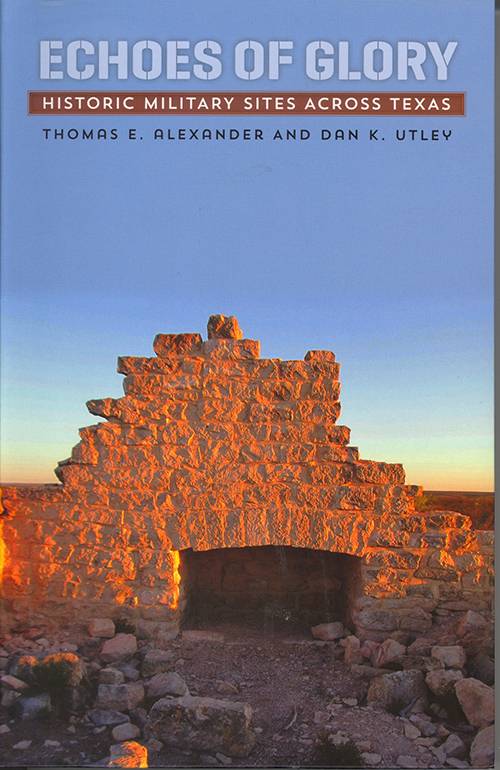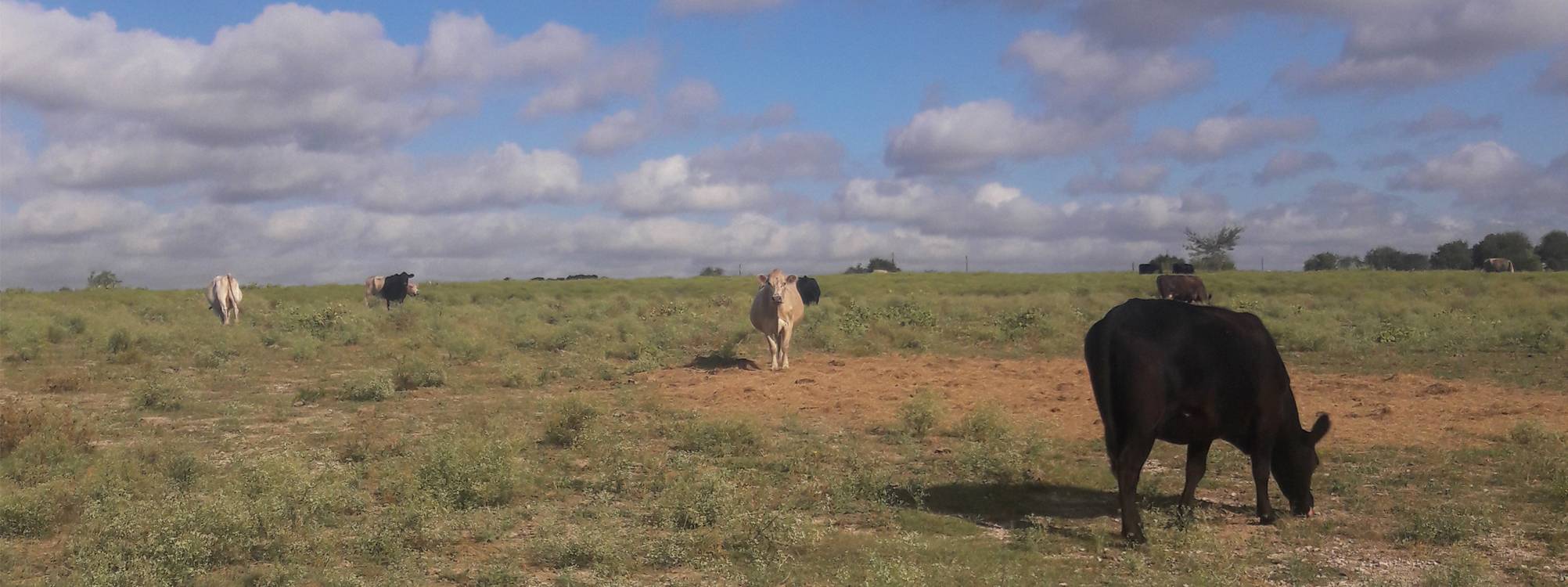We Salute You

Echoes of Glory: Historic Military Sites Across Texas
by Thomas E. Alexander and Dan K. Utley
College Station: Texas A & M University Press, 2015.
247 pp. $29.95 paper.
Reviewed by
William Huggins
Texas military history consists of far more than the great battles well known to everyone, such as the Alamo and San Jacinto. With such a rich and varied history, Texas played host to both successes and failures great and small. Echoes of Glory: Historic Military Sites Across Texas delves into the depths of Texas’s martial past to unearth some rare treasures. Detailed maps and photographs of whatever remains of the sites accompany the writing.
As colorful as the history itself, many characters populate these true stories. Famous names roll through the book, men of myth seen in historical action before they became famous, such as Robert E. Lee, Phil Sheridan, and George Armstrong Custer. Alexander and Utley verify the truths and debunk unsubstantiated myths of the “Washington slept here” variety. Presidents Zachary Taylor, Ulysses S. Grant, William Howard Taft, and Franklin Delano Roosevelt all fished at Port Aransas, a site with a complex military history. Yet some chapters feature lesser-known names that will stay with the reader long after the book is finished: Peter Ellis Bean, Juan Davis Bradburn, George Fisher, and Elmo Johnson. Nor to forget names such as Edward Dock Penn, first man from Austin to die in World War One.
As six flags have flown over the state, the scope of these various installations cover much of the Spanish occupation of the territory and even the American Revolution. Many seem to forget that the Spanish were in what would become the United States long before Pilgrims landed at Plymouth. Most of these old sites remain—but in ironic places like next to golf courses or only remembered in street signs. In Austin, the Texas chapter of Daughters of the American Revolution commemorates thirty-two Texans who fought in that war. Many landmarks still remain from Spanish occupation of the republic like the Presidio de San Saba and Fort Anahuac Park.
Though no battles were fought on its soil, Civil War sites still play important roles in Texas’s military history. Eight chapters deal specifically with Civil War issues. New details about Texas’s secession from the Union play out in some stories. Future well-known figures such as Robert E. Lee visited Texas several times on various errands before he took on the role of leading the Confederate armies. The story of Civil War cloth manufacturing at Huntsville serves as a particularly interesting topic: the chapter details the complex network of goods and services that made the Confederate war effort go, run entirely on the backs of slave labor picking cotton in the South so it could be processed by convict labor in Texas. The true horror of the slave economy comes through in this passage, with detailed information about payments to owners and treatment of workers.
Several chapters also cover the long period of war between Mexico and Texas. The story of Fort Ewell represents a brilliant example of astonishingly poor military planning. Incursions by the Mexican army were quite rare, many based more on rumor than fact. Excerpts from soldiers’ writings admit to their unhappiness and boredom in the vast emptiness of West Texas. While the men may not have enjoyed the landscape, one of the highlights of the book is the photographs that accompany every chapter. The special light of West Texas makes many of these photos stand out in awesome relief.
World War Two changed the fortunes of individuals and towns in Texas, and the war altered Texas’s economic status accordingly. The book treats this period of Texas’ military history well, especially in the transition from cavalry to air power. Several chapters also show how the rise of American military power in the WWII era brought many towns to economic prominence, especially in the case of Abilene. The aridity of West Texas also made it perfect for early flight training bases, expressed in special places like Johnson’s Ranch Airport. Yet for all the success and fortune military construction and payrolls brought along with them, much of the training itself was highly dangerous, a subject with which Alexander and Utley deal well.
Perhaps one flaw of the book is its handling of mixed-race soldiers. The ultimately sad story of the Black Seminole Scouts furthers the theme developed in the Civil War chapters of looking critically at race in Texas’s history. One passage conveys the challenges non-white soldiers faced in early military history. The problem with the Black Seminole Scouts passage is the romanticization of their skills, something readers might equate more with the fiction of Fenimore Cooper than history: terms like “innate ability,” “almost uncanny ability,” and “unique characteristics” make the mixed-race scouts appear almost more than human, which only adds to the tragedy of what happened to the scouts when their duty was done.
In all, this is a fine collection of rare and forgotten pieces of Texas’s military history. The book also plays importantly to the role citizens play in keeping the past alive. Alexander and Utley note the vital help they received from people all across Texas in their Acknowledgements at the book’s beginning, and words that close the book, that the “assignment is open to all of us who value the story of our state’s rich military past.” In that case, Texas’s history, both lauded and obscure, is in good hands.
William Huggins is a writer and ecocritic who lives, writes, and works in Las Vegas. His fiction and criticism have appeared in multiple venues.
